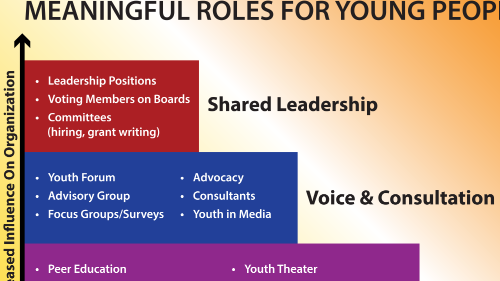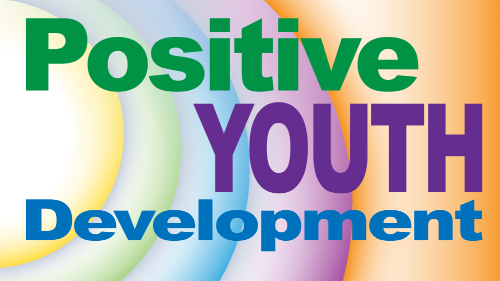Adolescent Identity Development
The development of a strong and stable sense of self is widely considered to be one of the central tasks of adolescence [1]. Despite the fact that identity development occurs throughout one's lifetime, adolescence is the first time that individuals begin to think about how our identity may affect our lives [2]. During adolescence, we are much more self-conscious about our changing identities than at any other stage in our lives [3].
What is Identity?
Identity refers to our sense of who we are as individuals and as members of social groups. Our identities are not simply our own creation: identities grow in response to both internal and external factors. To some extent, each of us chooses an identity, but identities are also formed by environmental forces out of our control [4].
Identity is dynamic and complex, and changes over time.
Self-Identity and Social Identity
- Self-identity refers to how we define ourselves. Self-identity forms the basis of our self-esteem. In adolescence, the way we see ourselves changes in response to peers, family, and school, among other social environments. Our self-identities shape our perceptions of belonging.
- Social identity is constructed by others, and may differ from self-identity. Typically, people categorize individuals according to broad, socially-defined labels [4]. For example, if you have dark skin, you may be labelled "Black" by others even though you may not have adopted that identity for yourself.
A positive self-identity is correlated with positive self-esteem [5, 6]. All identities are not equally valued by society, so some adolescents may especially need reinforcement to help them construct a positive sense of self.
Dimensions of Identity
Many dimensions of our identity intersect to form our sense of self and cannot be separated from one another. Visible dimensions of identity, such as race and gender, tend to be more important for individuals since they are significant to the individual in every social context and carry more serious consequences in society [4]. For example, race may be important in all social interactions, but political identity, which is not ordinarily visible, may be relevant for some individuals only during election time.

Let's look at an example of how social context may influence one's internal sense of identity:
Jasneet's parents were born in India but she is an American citizen and generally self-identifies as an American. She chooses to celebrate the Indian festival of Diwali with her parents and extended family but celebrates American holidays with her peers from high school.
In this case, Jasneet has an American national identity, but in her home environment finds that her ethnic identity may be important. In her school environment, she may celebrate American holidays and traditions. This illustrates how national and ethnic self-identities may vary depending on the social context.
Stages and Statuses of Identity Development
In the 1960s, psychologist Erik Erikson argued that adolescents face a major identity crisis, "Identity vs. Identity Diffusion," which he considered one of the stages of psycho-social development [3]. Successful resolution leads to a secure identity; failure leads to role confusion and a weak sense of self. The key to resolving this crisis lies within the adolescent's interaction with others.
James Marcia, also a developmental psychologist, described similar tasks for adolescents, but rather than characterizing them as "stages" he believed the process was non-linear [7]. Marcia proposed that "statuses" of identity development occur in response to crises in domains such as school, relationships, and values, rather than progressing in a linear fashion. According to Marcia:
- Identity Diffusion is the status of adolescents who have not made a commitment to a particular identity. A youth who has not yet considered college or job prospects, for example, could be said to be in the "identity diffusion" status with respect to his professional identity (although in other dimensions his self-identity may be strong). This status may not be resolved unless some experience forces a crisis.
- Identity Foreclosure involves committing to an identity prematurely without exploration or choice. This might occur, for example, when traditions are compulsory or parents are insistent on a particular identity, "foreclosing" conscious choice by the adolescent.
- Identity Moratorium is a stage of active exploration coupled with low commitment to a particular identity [1]. This is an interesting, exciting, and potentially dangerous time for an adolescent that often leads to conflict with parents or other authority figures. Adolescents need to be free to explore their identities, but also need guidance and support to proceed safely through this status.
- Identity Achievement is said to occur when the adolescent, having had the opportunity to closely explore an identity, chooses that identity with a high degree of commitment.
"Who Am I?" — Identity Formation in Adolescence
Written by Rachel Sumner of Cornell University, this handout provides a brief overview of adolescent identity development. ACT for Youth.
Identity Development Theory
This open education module briefly covers the fundamentals of identity development theory. Lumen.
The Future is Non-Binary, and Teens are Leading the Way
Here, researcher Phillip L. Hammack describes what he found from surveying hundreds of LGBTQ youth about gender identity. Pacific Standard.
Understanding Gender Identities
Written especially for young people who are questioning where they are on the gender continuum, this article covers gender basics in plain language. The Trevor Project.
References
- The content on this page is condensed from the ACT for Youth presentation Adolescent Identity Development: Who We Are by Alana Butler, Cornell University.
- Steinberg, L. (2008). Adolescence. New York: McGraw-Hill.
- Erikson, E. (1968). Identity: Youth and Crisis. New York: Norton.
- Frideres, J. (2002). Immigrants, Integration, and the Intersection of Identities. Calgary: University of Calgary Press., pp.1-22.
- Rosenberg, M. (1965). Society and adolescent self-image. Princeton, NJ: Princeton University Press
- Tajfel, H. & Turner, J. C. (1986). The social identity theory of inter-group behavior. In S. Worchel & L. W. Austin (Eds.), Psychology of Intergroup Relations. Chicago: Nelson-Hall.
- Marcia, J. E. (1966). Development and validation of ego identity status, Journal of Personality and Social Psychology 3, pp. 551-558.





